Genetic Code Expansion: Recent Developments and Emerging Applications
- PMID: 39737807
- PMCID: PMC11758808
- DOI: 10.1021/acs.chemrev.4c00216
Genetic Code Expansion: Recent Developments and Emerging Applications
Abstract
The concept of genetic code expansion (GCE) has revolutionized the field of chemical and synthetic biology, enabling the site-specific incorporation of noncanonical amino acids (ncAAs) into proteins, thus opening new avenues in research and applications across biology and medicine. In this review, we cover the principles of GCE, including the optimization of the aminoacyl-tRNA synthetase (aaRS)/tRNA system and the advancements in translation system engineering. Notable developments include the refinement of aaRS/tRNA pairs, enhancements in screening methods, and the biosynthesis of noncanonical amino acids. The applications of GCE technology span from synthetic biology, where it facilitates gene expression regulation and protein engineering, to medicine, with promising approaches in drug development, vaccine production, and gene editing. The review concludes with a perspective on the future of GCE, underscoring its potential to further expand the toolkit of biology and medicine. Through this comprehensive review, we aim to provide a detailed overview of the current state of GCE technology, its challenges, opportunities, and the frontier it represents in the expansion of the genetic code for novel biological research and therapeutic applications.
Conflict of interest statement
The authors declare the following competing financial interest(s): X.L. has financial interests in Demetrix and Synceres.
Figures



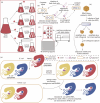
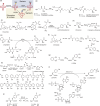



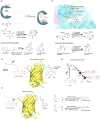

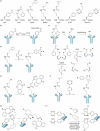







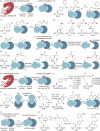
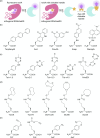







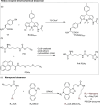
Similar articles
-
Practical Approaches to Genetic Code Expansion with Aminoacyl-tRNA Synthetase/tRNA Pairs.Chimia (Aarau). 2024 Feb 28;78(1-2):22-31. doi: 10.2533/chimia.2024.22. Chimia (Aarau). 2024. PMID: 38430060 Review.
-
Learning from Nature to Expand the Genetic Code.Trends Biotechnol. 2021 May;39(5):460-473. doi: 10.1016/j.tibtech.2020.08.003. Epub 2020 Sep 4. Trends Biotechnol. 2021. PMID: 32896440 Review.
-
Engineering aminoacyl-tRNA synthetases for use in synthetic biology.Enzymes. 2020;48:351-395. doi: 10.1016/bs.enz.2020.06.004. Epub 2020 Sep 8. Enzymes. 2020. PMID: 33837709 Free PMC article.
-
Expanding the genetic code: In vivo approaches for incorporating non-proteinogenic monomers.J Microbiol. 2025 Mar;63(3):e2501005. doi: 10.71150/jm.2501005. Epub 2025 Mar 28. J Microbiol. 2025. PMID: 40195833 Review.
-
Protein Expression with Biosynthesized Noncanonical Amino Acids.Methods Mol Biol. 2023;2676:87-100. doi: 10.1007/978-1-0716-3251-2_6. Methods Mol Biol. 2023. PMID: 37277626
Cited by
-
Tech-Enhanced Synthesis: Exploring the Synergy between Organic Chemistry and Technology.J Am Chem Soc. 2025 Aug 13;147(32):28523-28545. doi: 10.1021/jacs.5c10303. Epub 2025 Aug 5. J Am Chem Soc. 2025. PMID: 40762023 Free PMC article. Review.
References
Publication types
MeSH terms
Substances
LinkOut - more resources
Full Text Sources
Miscellaneous

